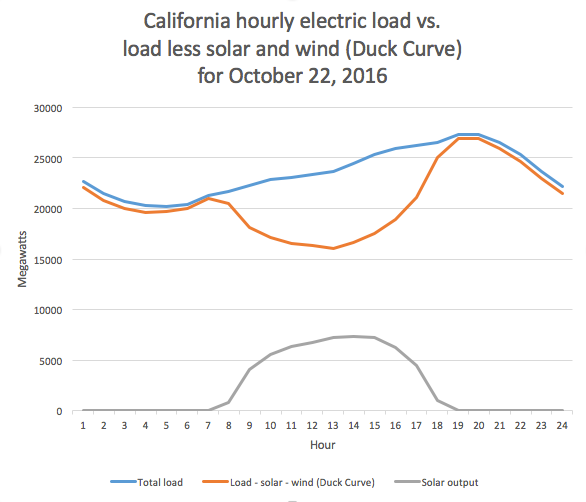I'll skip the global warming discussion, and try t catch up on some other posts...
Note that the cost for energy storage is declining less than $400/kwh today resulting in a cost per kwh of about $.13 (based upon 4000 charge discharge cycles). It is both utility scale and individual units that are following a cost curve similar to what solar and wind have followed. If you can get the cost down below the cost of storage in a Tesla (150/kwh) then it becomes economic. (In fact one opportunity is to take electric car batteries and repurpose them for home use after they no longer have the range for a car) A home environment is far easier on a battery than a car considering for example a Tesla 3 has a 192 kw motor, meaning the battery pack has to deliver that much power if you mash the accelerator. Consider that modern home service entrances have 200 amp service entrances, which is about 50 kw so it is clear the electric car is harder on batteries. ....
That is a good use of EV batteries, a stationary application can do fine with somewhat depleted batteries, as they aren't so concerned about weight/space, just buy more if they are cheap enough.
But while it helps, how
much can it help? It gets a little crazy when you scale things up, instead of just thinking about the concept.
Looking at the "Duck Curve", when solar starts to wane, and demand is growing as people get home - this is a gap that the utilities would love to fill with some short term storage (that was the idea behind the SMUD pumped hydro, which was canceled). Their baseline plants can't ramp up/down fast enough, so they have to waste fuel by starting them early and then running them too long.
If we spit-ball that, and say we just want to fill in that peak above the 25,000 line with storage, looks like ~ 2,000MW for ~ 3 hours? So 6,000MW-Hrs?
If we assume an old Tesla battery could provide 50 KW-Hrs (generous I think, and probably could not do it daily for long), we get 6,000/.05 = 120,000 old Tesla batteries. Though if they were distributed (likely), that would ease some peak currents on the transmission lines which is a good thing.
I'm not really sure how much fossil fuel is saved by doing some shifting like that. Probably fairly small % overall? Also remember that any storage system has losses. Using another generous 90% round-trip efficiency to charge an old Tesla battery, and then get the juice back out, you need to put in 11% more energy than you get out (denominators are funny things!). So that's another cost.
And if we really want to go green, and entirely eliminate a coal plant, we will need enough storage for a full day at least. Typical 800MW coal plant (there are about 20 of those in IL), would be 384,000 old Tesla batteries. And if we need it for all 20 IL coal plants, that's 7,680,000 old Tesla batteries. And if we need it for a week of reduced output, say we still get 25% over a week... that's... about 40 Million old Tesla batteries. Just for IL.
... Plus a bit of time shifting can help. ....
It does help - a bit.
I thin someone earlier mentioned desalination plants for time shifting power demands. The trouble is, most of these sorts of things are capital intensive. It just isn't affordable to run something like that a few hours a day, those may need to be run 24/7. There is some opportunity, but like most things, it is probably a little thing. It helps, a little.
-ERD50

